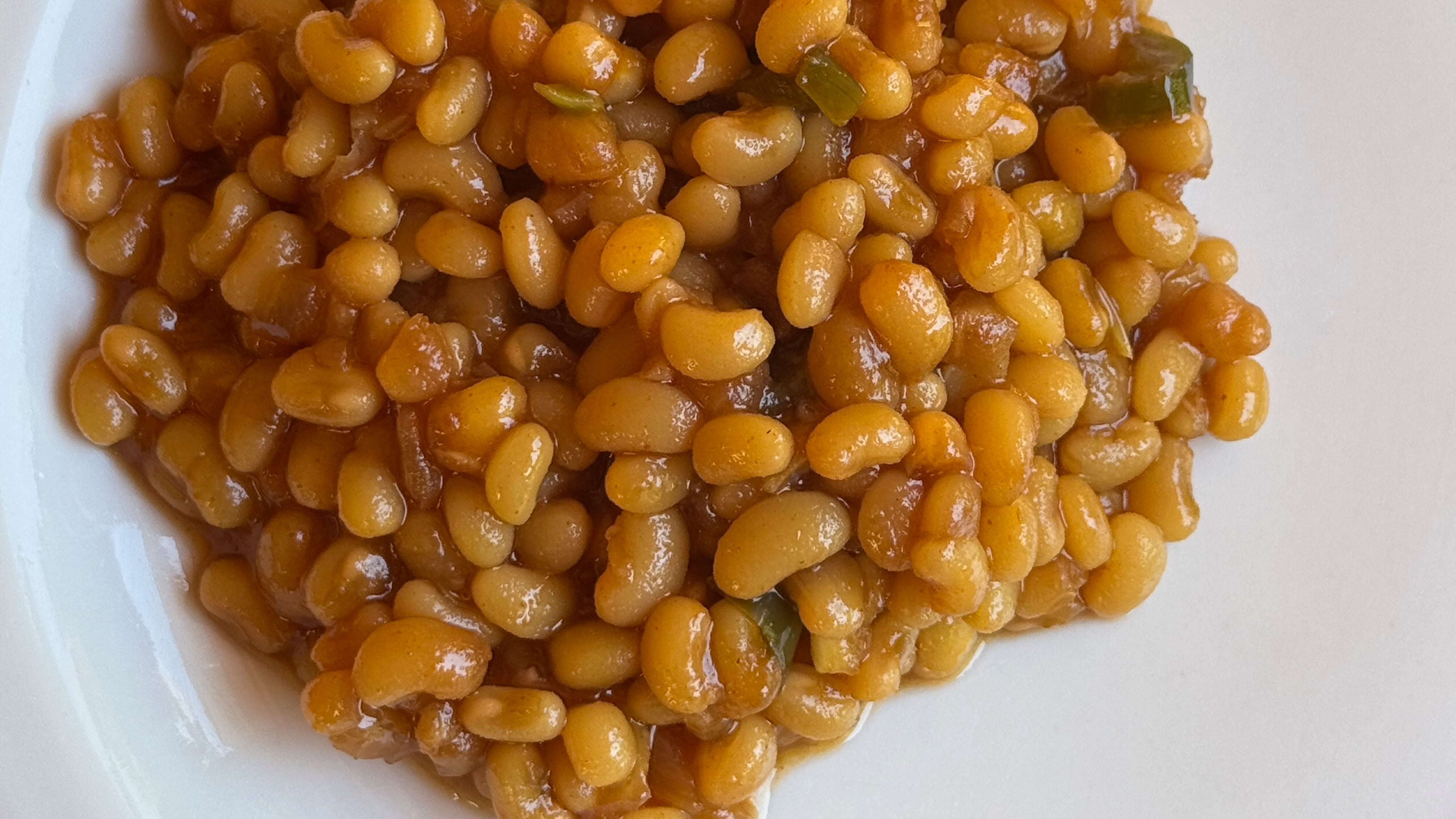Jim Dixon wrote about food for WW for more than 20 years, but these days most of his time is spent at his olive oil-focused specialty food business Wellspent Market. Jim’s always loved to eat, and he encourages his customers to cook by sending them recipes every week through his newsletter. We’re happy to have him back creating some special dishes just for WW readers.
Nobody actually bakes “baked” beans anymore. While most people just open a can of sweet and savory steamed white beans, those who cook usually make their “baked” beans on the stovetop. And since I’m at the other end of the spectrum, almost always cooking beans in the oven, I didn’t want to call this a recipe for baked beans. But most eaters immediately understand those words to mean beans flavored with brown sugar or molasses and maybe a tiny bit of pork that is somehow associated with Boston.
Popular baked bean history recounts how the early colonists learned how to make them from the Indigenous people whose land they were stealing. The natives supposedly cooked beans (another American native) with bear fat and maple syrup. But the precontact North Americans who tapped maple trees most often made the sweet sap into maple sugar, which was easier to store and transport. It’s much more likely that the sweetener of choice for the early versions of baked beans was molasses, the byproduct of slave plantation sugar production that flowed into Boston as part of the infamous triangular trade economy.
The three-legged business sent European finished goods to Africa for enslaved humans who went to the New World to produce sugar and molasses that was shipped to the American colonies for, among other things, the production of rum. That and other commodities went back across the Atlantic to complete the triangle. Much of the imported molasses landed in Boston, and while most of it was distilled into rum, the cheap sweetener made a pot of beans more palatable.
Convoluted history and my personal prejudices aside, sweet and savory beans are delicious and fairly easy to make at home. This version is meatless, but cooking a little bacon along with the onion and jalapeño adds another layer of flavor. Small white or navy beans are the traditional choice, but heirloom varieties like yellow-eye or Jacob’s cattle are even better.
Recipe
½ lb white beans
3 cups water
1 teaspoon kosher-style sea salt
1 onion, chopped
1 jalapeño, chopped
¼ cup extra virgin olive oil
2–3 cloves garlic, chopped
¼ cup brown sugar
¼ cup molasses
3 tablespoons ketchup
2 teaspoons smoked paprika
Combine the beans, water, salt, and a glug of olive oil in a clay bean pot (or any oven proof pot with a lid). Bake at 250F for 3–4 hours or until the beans are very tender, checking occasionally to make sure the beans are just barely covered with water (if you smell them while cooking it usually means you need to add a little more water). Or simmer the beans on the stovetop until tender.
Cook the onion and jalapeño in the olive oil until just beginning to brown, then add the garlic and cook for another minute. If you baked the beans, transfer them to another pot and add the cooked onion mix, the brown sugar, molasses, ketchup, and smoked paprika. Bring to a gentle simmer and cook until any cooking liquid has evaporated. Taste and add salt if needed. I think these are best at room temperature.

